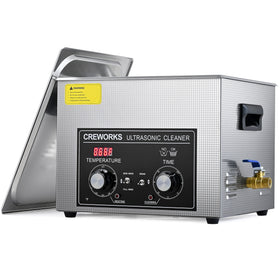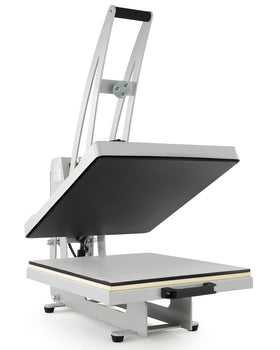With over 10000+ orders
With over 10000+ orders
Are your excavator parts dirty and grimy? A good cleaning will make them work better and last longer. But not just any cleaning will do.
Ultrasonic cleaners are a great tool for cleaning excavator parts. They clean better than scrubbing by hand, especially for parts with small spaces and channels.
In this guide, you'll learn how to use an ultrasonic cleaner for your excavator parts. You'll see which parts benefit most and how to get the best results.

These parts benefit most from ultrasonic cleaning:
Control valves - Gets rid of sticky buildup that makes valves stick or move slowly
Hydraulic pump parts - Cleans without scratching precision surfaces
Fittings and connectors - Cleans thread areas where leaks often start

These parts develop carbon deposits and varnish:
Fuel injectors - Cleans spray holes for better fuel delivery
Injection pumps - Removes deposits that affect timing
Fuel filter housings - Makes reusable parts like new

These also work well in an ultrasonic cleaner:
Thermostats - Removes scale that affects cooling
Small sensors - Cleans without damage
Nuts, bolts, and clamps - Gets rid of oil and dirt

Take apart the components following your equipment manual. Rinse off loose dirt with water or use compressed air to blow it away.
Check what materials your parts are made from. Most excavator parts are steel or iron and clean well in ultrasonic cleaners.
Fill the cleaner with the right solution. For oily, greasy excavator parts, use a solution made for metals. Follow the mixing instructions on the package.
Heat the solution to about 140°F (60°C) for best results. Most ultrasonic cleaners have built-in heaters.
Put your parts in the cleaning basket carefully. Follow these tips:
Don't stack parts on top of each other
Make sure all surfaces can touch the cleaning solution
Position hollow parts so air bubbles can escape
Keep any rubber seals above the solution if possible
Set the timer for 10-15 minutes to start. Some really dirty parts might need up to 30 minutes.
Don't open the lid during cleaning - this reduces the effectiveness.
After the cycle, check your parts. If they're still dirty, run another cycle. Some stubborn deposits might need a second or third cleaning.
Rinse your parts thoroughly with clean water. Distilled water works best for the final rinse.
Dry the parts completely. You can use:
Compressed air
A warm oven (170°F/75°C)
Clean, lint-free towels
Apply a light coat of oil to prevent rust, especially on bare metal parts.
Reassemble everything according to your equipment manual.

Not all ultrasonic cleaners work well for excavator parts. Here's what to look for:
Choose based on your largest parts:
2-3 gallon size works for mini excavator parts
5-10 gallon size works for standard excavator parts
15+ gallon size works for large components
Look for these helpful features:
Heater (essential for excavator parts)
Timer
Drain valve
Stainless steel tank
Basket to hold parts
Make sure it has enough power. Look for at least 40 watts per gallon of capacity for tough excavator grime.

Using the right ultrasonic cleaning solution makes a big difference.
Use a degreasing solution made for metals. These cut through hydraulic fluid and engine oil well.
Avoid harsh solvents that could damage seals or plastics if your parts have these materials.
Use a solution made for fuel system parts. These break down carbon deposits from fuel and combustion.
Use a rust-removing solution if your parts have surface rust. Follow up with oil after cleaning to prevent new rust.
Further reading: How to DIY eco friendly ultrasonic cleaner solution
Stay safe while cleaning:
Wear gloves to protect your hands from chemicals
Use eye protection in case of splashes
Work in a well-ventilated area
Keep solutions away from children and pets
Never put your hands in the cleaner while it's running
Keep your ultrasonic cleaner working well:
Change the solution when it gets dirty
Clean the tank between uses
Don't run the cleaner when empty
Check the heating element regularly
Make ultrasonic cleaning part of your regular maintenance:
When performance seems sluggish
During seasonal maintenance
If you notice leaks
After working in muddy or dusty conditions
Before putting equipment in storage
Ultrasonic cleaning is a game-changer for maintaining excavator parts. It saves time, cleans better than manual methods, and helps your equipment last longer.
With the right cleaner, solution, and technique, you'll get professional-level results. Your hydraulic system will thank you with smoother operation and fewer breakdowns.
For high-quality ultrasonic cleaners perfect for excavator maintenance, check out Creworks' industrial ultrasonic cleaners.












Leave a comment